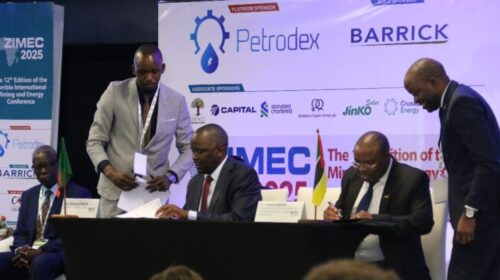South Africa, Namibia among new African Green Hydrogen Alliance’s founding members
South Africa, Namibia and four other African countries on May 18 formally launched the Africa Green Hydrogen Alliance, with the aim to make the continent a frontrunner in the race to develop green hydrogen, to accelerate the transition away from a reliance on fossil fuels and to shift to new energy technologies that open up access to clean, affordable energy supplies to all.
In forming the alliance, Kenya, South Africa, Namibia, Egypt, Morocco and Mauritania intend to foster collaboration on creating a sustainable enabling environment to supercharge green hydrogen development.
This includes the development of public and regulatory policy, capacity building, financing and certification needs to mobilise green hydrogen production for domestic use and export.
The alliance is now inviting more African countries to join in this effort, responding to the opportunities presented by lower-cost renewables, fast-developing electrolyser technology and signals in some major markets that green hydrogen demand is likely to emerge at scale this decade.
The countries formally launched the Africa Green Hydrogen Alliance at the first-ever Green Hydrogen Global Assembly, in Barcelona, Spain, with support from the United Nations (UN) Climate Change High-Level Champions, the Green Hydrogen Organisation, the African Development Bank and the UN Economic Commission for Africa.
Green hydrogen, produced with renewable power, is noted to have the potential to rapidly decarbonise hard-to-abate industrial sectors such as steel, chemicals, fertilisers, shipping and trucking.
A number of African countries are posited to be well-suited to develop green hydrogen industries, with strong solar and wind energy potential and large tranches of non-arable land.
This could provide Africans with new access to clean energy sources, job opportunities in the zero-emission economy, public health benefits such as cleaner air, domestic wealth creation and export revenues.
For example, South Africa’s goal to deploy 10 GW of electrolysis capacity in the Northern Cape and about 500 000 t/y of hydrogen by 2030 is forecast to create 20 000 jobs yearly by then and 30 000 by 2040.
Namibia’s planned U$9.4-billion green hydrogen project is expected to create 15 000 jobs during construction and 3 000 permanent positions – 90% to be filled by Namibians.
Projects are also planned in Egypt, Mauritania and Morocco.
However, the alliance notes that developing green hydrogen at scale and reducing its production costs will require cooperation and collaboration across governments, businesses, investors, multilateral development banks, civil society, technical and academic experts and others.
Governance will also be key, with transparency and accountability considered to be central to ensuring the green hydrogen sector avoids the pitfalls that have affected other extractive industries on the continent.
The six founding countries intend to make the alliance a platform for collaborating on workstreams, exploring synergies between green hydrogen projects, sharing lessons learned and research and development, as well as collaborating with the private sector, development finance institutions and civil society.
59 total views , 1 views today





